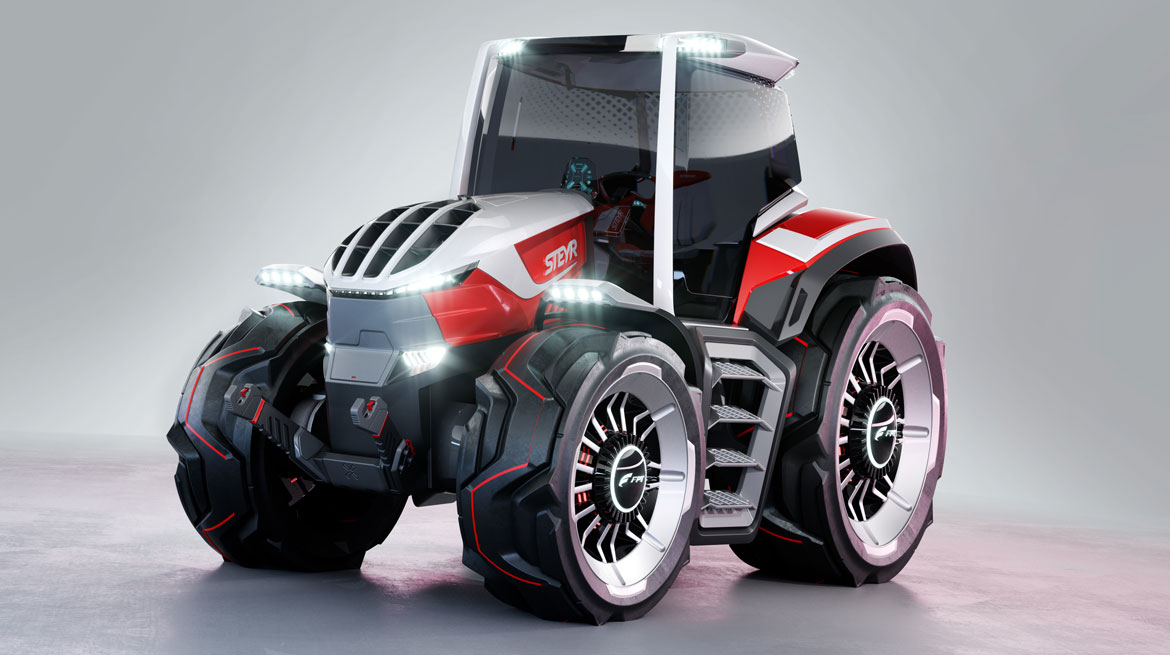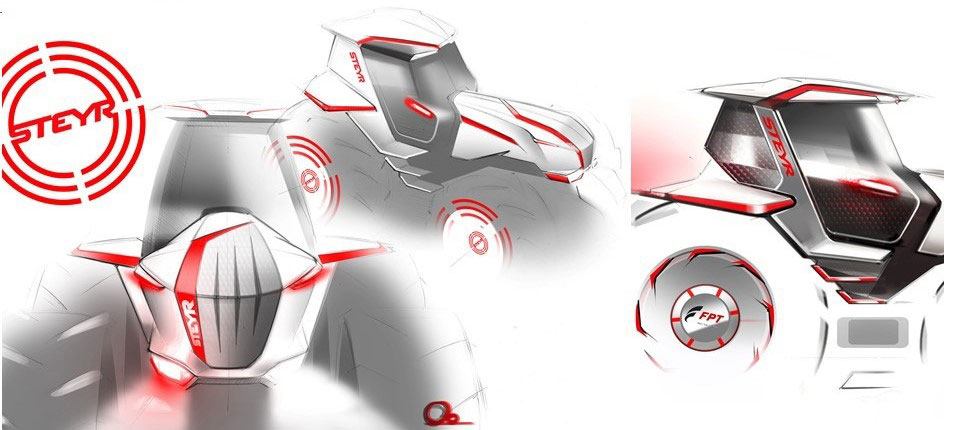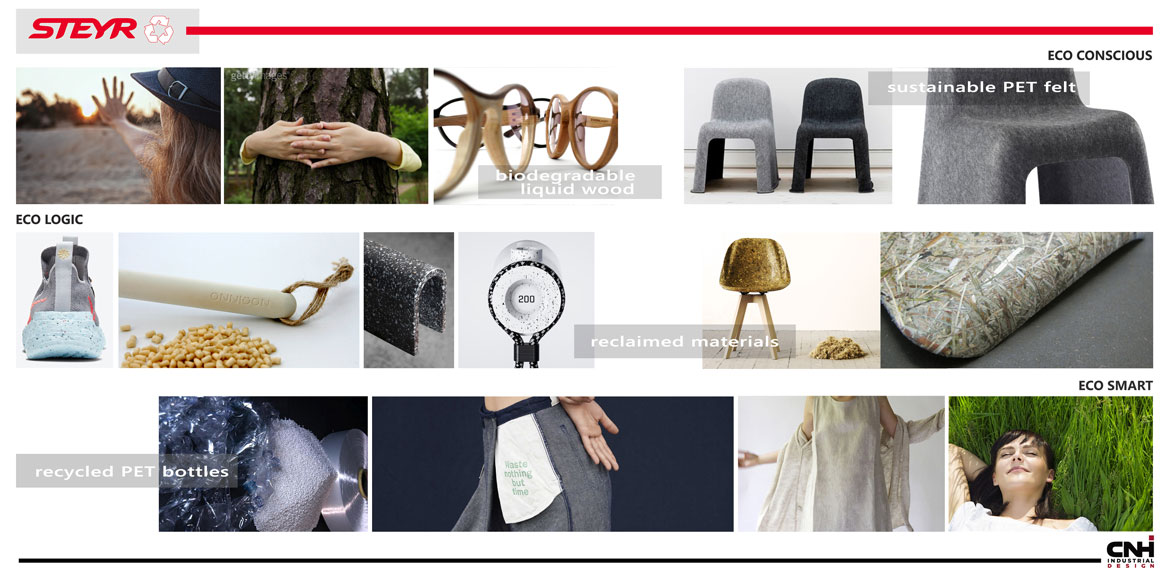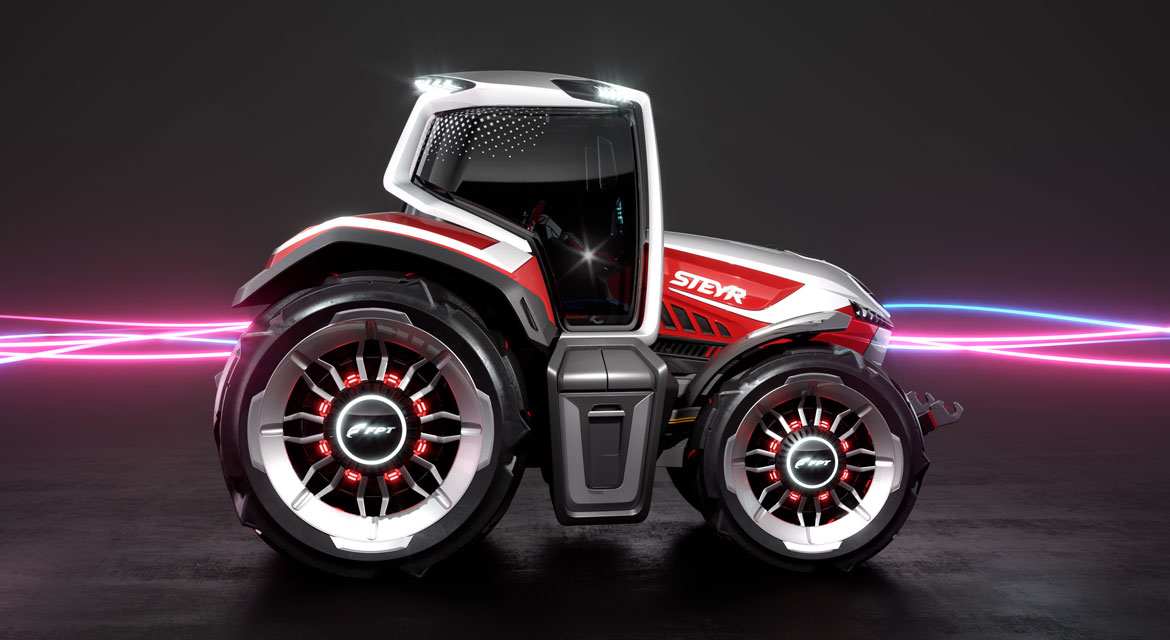Surprising spaces often emerge in the universe of agricultural machinery, as though inviting cutting edge technological innovation: the specificity of the field of application, together with the training and professionalism of those who use the vehicles, leads to a willingness on the part of designers to imagine advanced solutions, equal to the challenge of user requirements. This prospect reaches its zenith of excellence in the latest creation of the CNH Industrial group, the STEYR Konzept, expressly devoted to the study of as yet unexplored scenarios and awarded, not surprisingly, the 2020 MUSE Design Awards for the Concept Design category.
Revolutionary concept
“It was a very exciting development experience”, says David Wilkie, Head of Design of CNH Industrial , with satisfaction. “We had already worked on futuristic prototypes in the past, but this time we went much further, because we started with a blank sheet and a technically revolutionary concept, hybrid propulsion. The formal legacy of the STEYR brand sometimes found itself at odds with the completely revolutionary approach of the engineering platform. We chose to preserve the proportions of a modern tractor, if anything refining the functionality of some of the components, yet under the cab there nestles an approach that has never been seen before”.
Four electric engines
“That’s exactly right”, confirms Pierpaolo Biffali, head of product engineering at FPT Industrial, explaining the reasons behind the evolutionary leap. “The overall objective was to use four electric motors, one per wheel, so as to drastically improve the efficiency of the vehicle, which can be identified as a general purpose tractor and therefore intended to perform a variety of tasks”.
Smooth increases of power
“The combustion engine is used only to recharge the batteries and runs at constant speed, while any load is overcome by an increase in the current, delivering a very smooth power flow. During field work, such as when ploughing a field which has different soil conditions across it, the power required changes. This engine provides smooth increases of power when the draft load increases for smoother and more comfortable operation. In addition, of course, emissions are also reduced by up to 10 percent, making it more sustainble to use in farms which are close to built up areas”.
A central beam frame
These pre-conditions generated a practically unique structure organised around a central beam frame containing the accumulators and holding the suspension on four independent wheels, each with a single arm. “All the surfaces characterising these elements were purpose designed, as if they were elements to be put on display, fully integrating the process of defining the lines”, explains Stefano Fincato, senior designer.
Tecnological and comfortable cabin
Finally, the interior fully expresses the desire to meet the professional expectations of operators who will be spending many hours a day there. The unobtrusive screens, devoid of unnecessary information, are combined with materials aimed at well-being reveals Isabella Burgio, head of Colour&Trim. When the door is opened (electrically), a few steps appear automatically and the seat rotates towards the driver to invite them in: welcome to the future.
(Full article in A&D no. 243)
















